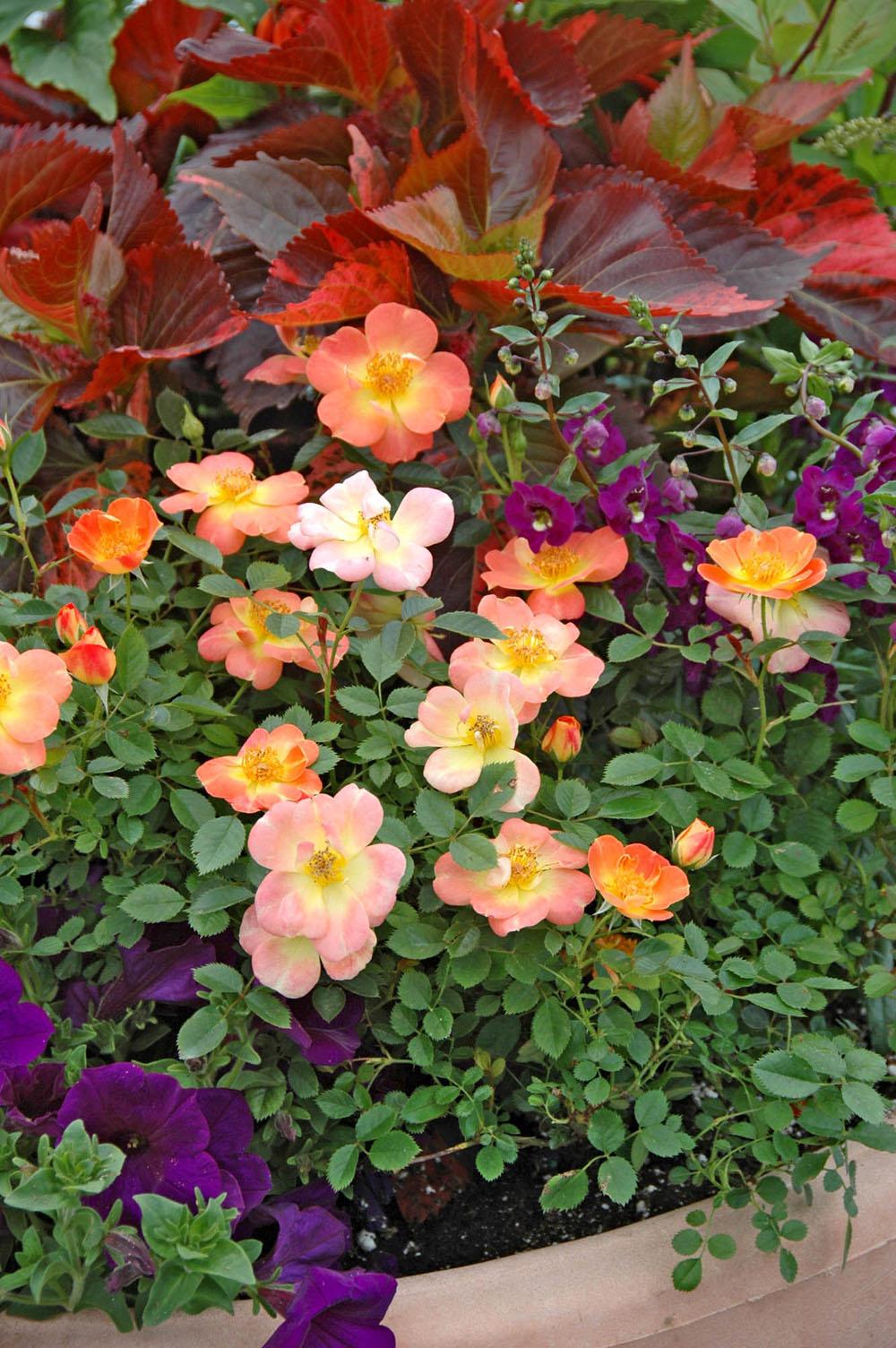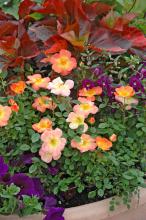Information Possibly Outdated
The information presented on this page was originally released on August 30, 2007. It may not be outdated, but please search our site for more current information. If you plan to quote or reference this information in a publication, please check with the Extension specialist or author before proceeding.
Beyond Paradise is a dreamy copper plant
By Norman Winter
MSU Horticulturist
Central Mississippi Research & Extension Center
Beyond Paradise leads a parade of new copper plants finding its way to garden centers across the country. You will love the plant for its brilliantly variegated, colorful leaves.
At the end of the summer, when little else is looking good, Beyond Paradise will be a beacon in the garden, garnering admiration from those who pass by your home.
This picturesque plant, which reaches 36 inches tall, is one of several new and unusual plants coming from Euro American Propagators. Another one is Bourbon Street, a compact plant reaching only 24 inches tall with dark green leaves edged in a fiery scarlet-orange. Yet another is the exotic-looking Ceylon, which reaches 14 to 26 inches tall, has an upright habit and features purple leaves edged in hot pink.
Copper plants originated in the Pacific Islands. They are in the Euphorbia family, making them related to the poinsettia, croton and chenille plants. In the South Pacific, they reach 10 to 15 feet tall.
The copper plants require well-drained soil. If you suspect poor drainage, incorporate several inches of organic matter while preparing the bed. These plants grow quite large, so space them adequately. At 18 inches apart, they will quickly form a hedge-like look. You may want to space them 24 to 36 inches apart, depending on your goal.
Although they will be impressive with just a few hours of sun, planting them in full sun will yield even more spectacular color. The copper plant responds well to a midsummer pinching or pruning to encourage lateral branching and a bushier appearance. To grow them as tall as possible, side-dress monthly with light applications of a slow-release, balanced fertilizer.
Copper plants like Beyond Paradise are great when grouped in clusters among evergreen shrubs. Their bold copper colors make a striking contrast to the dark green of the shrubs.
Combining them with ornamental grasses creates showy beds. My first choice is Hameln, a dwarf fountain grass that forms coppery-pink flower spikes on 24-inch-tall clumps. Purple fountain grass and Karl Foerster, a feather reed grass, also mak nice companion plants.
Beyond Paradise is incredible in mixed containers, too. I've had the opportunity to see them with roses like Oso Easy Paprika, mixed with Pineapple Splash coleus and grown with Diamond Frost euphorbia. Almost any color can work with a copper plant.
One beautiful companion planting you almost have to see to believe groups the plumbago with the copper plant. The light blue flowers of the plumbago combine uniquely with the bronze leaves of the copper plant in a way that is almost indescribable.
Copper plants were sold generically for years, but Beyond Paradise, Bourbon Street, Ceylon and another called Chocolate are about to change all of that. Generic varieties will be out-of-date when it comes to copper plants.
Copper plants are perennial shrubs in zones 9 to 11, but the rest of us will treat them as we do coleuses. But even if you buy it every year, this beautiful annual is worth every penny you will spend on it.




